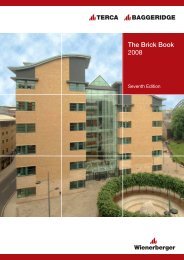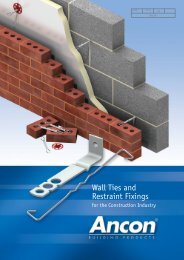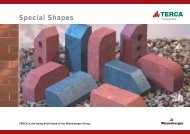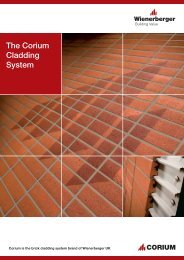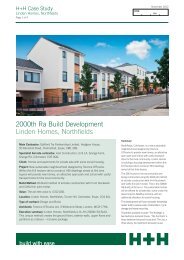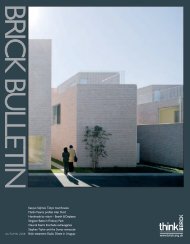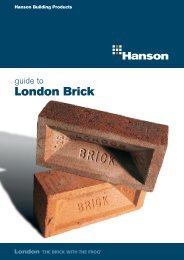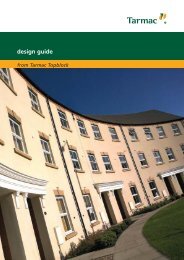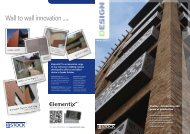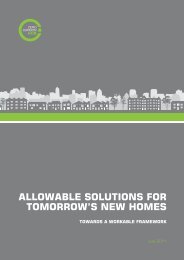Code for sustainable homes: case studies volume 2 - Gov.uk
Code for sustainable homes: case studies volume 2 - Gov.uk
Code for sustainable homes: case studies volume 2 - Gov.uk
Create successful ePaper yourself
Turn your PDF publications into a flip-book with our unique Google optimized e-Paper software.
WORKING WITH THE CODE<br />
FOR SUSTAINABLE HOMES<br />
This is the first scheme in which the developer<br />
has achieved <strong>Code</strong> certification above <strong>Code</strong><br />
Level 3. The developer felt that in terms of<br />
changes in design, the biggest challenge come<br />
when moving from <strong>Code</strong> Level 4 to <strong>Code</strong><br />
Levels 5 and 6, due to a number of factors<br />
including the inclusion of a greater amount<br />
of renewable energy, more water efficient<br />
technologies and greater airtightness.<br />
The developer also felt that the inherent<br />
features of the site play a key role in the<br />
achievability and cost of achieving higher levels<br />
of the <strong>Code</strong> (most notably <strong>Code</strong> Levels 5 and<br />
6). For example, if a developer is easily able<br />
to achieve the ecology credits or the flood risk<br />
or surface water run-off credits, then this will<br />
allow more scope to decide how the other<br />
credits are achieved by the house design.<br />
As the layout and design of the units had<br />
already been determined, certain features<br />
were installed primarily to achieve <strong>Code</strong><br />
points. The developer felt that this box ticking<br />
approach was not beneficial and that ideally<br />
features should be designed in from the outset<br />
in order to deliver real benefits on the site.<br />
There can also be issues associated with site<br />
wide credits if the <strong>homes</strong> being assessed<br />
against the <strong>Code</strong> are only one phase of a much<br />
larger development, particularly in associating<br />
achievements made across the whole<br />
development with only one part of the site.<br />
Through this project the developer has gained a<br />
better understanding of the design implications<br />
associated with high level <strong>Code</strong> compliance<br />
and has also found that this is not always<br />
straight <strong>for</strong>ward. It became apparent that<br />
compliance with one area of the <strong>Code</strong> could<br />
often present conflicts of difficulties in complying<br />
with another part of the requirements, and<br />
very often a compromise had to be reached.<br />
COSTS AND VALUE<br />
The build cost excluding land and fees was<br />
around £985/m² <strong>for</strong> the <strong>Code</strong> Level 3 unit and<br />
£1423/m² <strong>for</strong> the <strong>Code</strong> Level 6 development.<br />
The costs on this site were higher than on<br />
a more ‘traditional’ site due to the bespoke<br />
design and specification <strong>for</strong> the development.<br />
The <strong>Code</strong> Level 3 unit cost around £4500 more<br />
to build than a standard unit on the site built<br />
to Building Regulations, while the <strong>Code</strong> Level<br />
6 unit cost around £50,000 more to build<br />
than a standard unit.<br />
The units are currently on sale ranging<br />
from £305,950 <strong>for</strong> the <strong>Code</strong> Level 1 unit<br />
to £339,950 <strong>for</strong> the <strong>Code</strong> Level 6 unit. While<br />
the developer is selling the units at a premium,<br />
which increases in relation to the level<br />
achieved, this premium is still less than the<br />
cost required to achieve the specification,<br />
particularly at higher code levels.<br />
CASE STUDY 8 | CODE FOR SUSTAINABLE HOMES | 39



